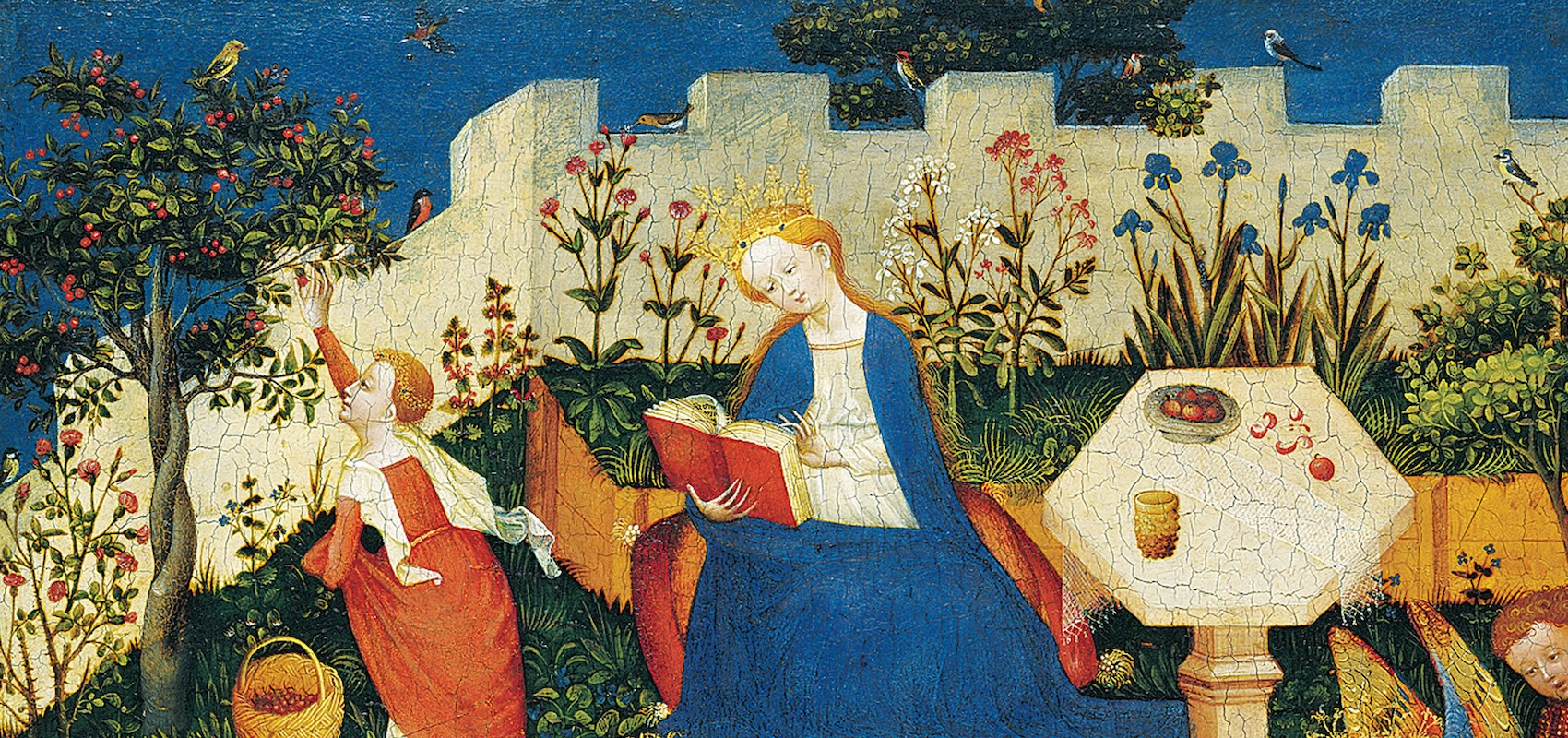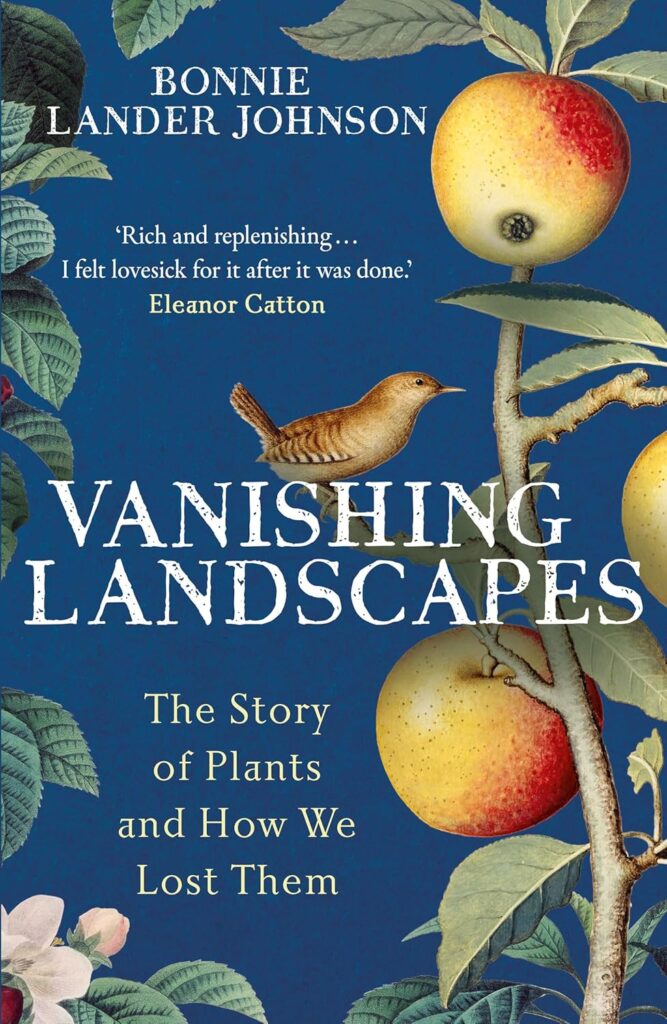
Vanishing Landscapes:
The Story of Plants and How We Lost Them
by bonnie lander johnson
hodder and stoughton, 320 pages, £22
In A Distant Mirror: The Calamitous 14th Century, Barbara Tuchman wrote that the “people of the Middle Ages existed under mental, moral and physical circumstances so different from our own as to constitute almost a foreign civilization.” Thus, Tuchman went on, the similarities between us and them reveal qualities “permanent in human nature.” From this perspective, a new book by scholar and First Things contributor Bonnie Lander Johnson, Vanishing Landscapes: The Story of Plants and How We Lost Them, offers the intriguing promise of a way back to a life closer to nature. If we know how they did it, maybe we can do it, too.
Lander Johnson is a fellow and associate professor at Downing College, Cambridge, where she teaches the literature and history of the early modern period. She is also the author of Botanical Culture and Popular Belief in Shakespeare’s England and the editor of The Cambridge Handbook of Literature and Plants. Now Vanishing Landscapes offers a general-interest work on similar subject matter. In it, Lander Johnson examines the history of humanity’s relationship with nature through the prism of seven workhorse plants, over a period ranging from the 1530s through the 1750s.

Lander Johnson details the British uses of apples, saffron, woad, reed, oak, grapes, and wheat, during the transition from the premodern (medieval) usage to the modern. Wild crab apples, for instance, have always flourished in the British Isles. But the first variety that was good for eating, the Costard apple, was introduced by the Normans in the eleventh century. After being for a time a fashionable food for aristocrats, it became a staple for the medieval peasantry and remained popular until the 1960s. Fruit trees were particularly significant in medieval times because their bounty was reserved for personal use, instead of being sold as cash crops, as grains were. And apples were “easy to grow and harvest, easy to store over winter and highly nutritious whether they [were] eaten raw, cooked or fermented as cider or vinegar.” Orchards were considered part of the medieval commons, with the result that apples were freely available to everyone, Lander Johnson writes, and thus represented a natural and direct human right to God’s bounty—so fundamental that people did not even conceive of it as a “right.” Apples represented “the ancient expectation that the earth was created for use by all people, ‘in common.’” Until, that is, enclosure wrested this precious resource from the people.
Saffron, the subject of the second chapter, illustrates our former reliance on herbs—and on those around us —for health and healing. In medieval Europe, “simples” were remedies known to most housewives, produced from a single herb or flower and grown in a kitchen garden. Today saffron is primarily a niche seasoning associated with Spain or the Middle East, but in the Middle Ages, it grew in fields and gardens all over Britain and Ireland, “both treasured and ubiquitous.” Medieval people used it to treat melancholy, “pox of the eye,” and “cysts, swellings and cankers.” (Modern scientific research lends at least some support to all three uses. Unfortunately, most saffron commercially available today has been diluted and would not be recognizable as the medieval product.)
In order to explain how our relation to nature was transformed, Lander Johnson offers an eclectic mixture of history, personal reflection, and present-day reporting. She contemplates the apple tree in the garden of her Cambridge home and bakes saffron buns with her children. She also visits modern-day craftspeople who are attempting to resurrect or carry on nearly lost traditions—small-farm cider-makers in Devon; a woman in the Scottish Highlands who makes natural plant dyes; a husband-and-wife reed-cutting team in East Anglia.
The main turning-point is Henry VIII’s dissolution of the monasteries and the sixteenth-century enclosure of land formerly used as commons. Apples lost their centrality due to the widespread privatization of orchards in the period from 1536 to 1550. These reforms transferred land formerly held by the crown, monasteries, or the nobility to smaller landholders, resulting in a social division between landowners and less fortunate tenant farmers. To some extent these changes were imposed from above, but they were also widely taken up because of human impulses we’ll recognize. “Some medieval commoners aspired to a greater degree of separation from their neighbours,” Lander Johnson writes. They wanted to amass wealth of their own, pile up stores for the future, and gain in security and self-determination. Goodbye, free apples.
Around 1550, the new forms of land ownership and the shuttering of the monasteries created a wave of displaced rural youths. These youths set out for London, where the trades were increasingly being centralized. Once there, they no longer had access to simples prepared by female relatives or village herb-women, and they were much more likely to receive an education and become literate. Medicine became literate as well; the College of Physicians, the first body of its kind in Britain, was established in 1518. Henceforth, forms of “expert” knowledge arose, and remedies became impressive, exotic, and rare instead of trusted, domestic, and practical. Goodbye, saffron.
The story of humanity’s premodern relationship with nature and early-modern alienation makes for riveting reading. Lander Johnson’s chapters on local clothing dyes and reed-farming prior to fenland drainage in East Anglia beautifully evoke the mystique of the past. Further developments include the effect on English forestry policy of Oliver Cromwell’s New Model Army and the relationship between government management of grain stores and the foundation of the banking system. But Vanishing Landscapes is less successful in delivering on its most tantalizing promise: explaining what the plants meant to the people of the time and how social structures and plant use were connected. In her introduction, Lander Johnson suggests that the premoderns can teach us how to resist our own alienation from nature—a thrilling proposal, but one left unfulfilled.
The general tone of the book is established early on:
We all once lived in the landscape. We worked and loved, slept and dreamed inside it. . . . We relied on plants for everything but we did not view them as mere objects for our pleasure and use. . . . Wheat was not only food but the breath of God calling us to communion with each other. Flowers fattened bees but they also showed us how to live, their faces turned all day to heaven and inward at night. We were not the authors of nature but part of its fabric. This was our experience of the natural world until we became modern people.
It’s possible that all these things are true—the reader has no information to the contrary—but the exaggerated romantic language gives me pause. It does not seem credible that human beings who were engaged in subsistence farming ever needed to learn about day and night from the flowers. If they thought wheat was “the breath of God,” that’s interesting, but it raises questions and should be sourced. Nor does it seem likely that early modern people understood nature just as we do now, as a landscape full of plants who should be our respected and loving partners, with whom we are more or less equals as part of the fabric of the natural world. This rhetoric is a particular feature of the present—when we have defeated nature, have no fear of it, and are busy exhorting others to treat it better. Peasants in Britain in the 1500s might have indulged in almost exactly the same form of misty nature-worship as today’s urban nostalgists—but it seems unlikely. How did medieval Christians understand “nature” anyway?
Lander Johnson says that medieval people believed “the fruits of the earth were created by a loving God for the sustenance of your body and soul,” that pruning branches was “caring for God’s own body,” and that plants were “creatures with a soul placed in them by God.” This reader is left suspicious. In the religious framework of the Middle Ages, was your soul nourished by plant foods, or only your body? And in what sense does God place the soul in the plants? St. Thomas Aquinas, following Aristotle, taught that though all living creatures have anima, a form of life force or soul, only the human soul is immortal, and God’s personal intervention occurs only in the placement of human souls.
On a higher level, were human beings part of the “fabric” of God’s creation in the same way animals and plants were, or in a different way? I suspect that medievals had ideas of order and hierarchy that undergirded their treatment of “nature” (whatever that meant to them), and that these faithful, Christian belief structures were the key element that has become alien and unimaginable to us. Yet they are precisely what we need to learn about, in all their challenging detail, if we are to reverse course.
Lander Johnson’s story of transition reminds us of Tuchman’s “permanent” qualities: Our rulers’ desire for power and our human desire for advancement severed our connection to the apples; the lure of the foreign and exotic caused saffron and woad to disappear; and so on. It would be fruitful to connect these impulses to the modern-day vices inherent in phenomena such as urban pastoral nostalgia, which has complex effects on the very natural world to which its practitioners wish to return. Lander Johnson acknowledges some of these vices during her visits to the modern-day practitioners of old-fashioned, low-tech, small-business ways of farming and crafting— but not quite sharply enough. She knows that traditional making and crafting businesses, in their modern incarnation, produce luxury goods for elites at such extraordinary expense that the product often has to be subsidized by other income streams, usually some form of tourism.
She also mentions that the elite love of rural areas in which pastoral nostalgia can be indulged is rapidly turning these areas into second-home deserts (in both the U.S. and the UK), thus pushing out lower-income residents and all but the most successful makers and crafters—who in fact are an intensely modern phenomenon. She identifies the complex role nostalgia plays in alienation—in, for example, London of the mid-sixteenth century, when newly educated arrivals from the countryside turned to cataloguing botanicals as a hobby, hastening the dominance of scholarly expertise and displacing the very tradition of herb-wisdom they yearned for. Yet she indulges in this form of utopian dreaming herself. It’s a frustrating tendency in an otherwise thoughtful book. Too much of this, and the landscape—both medieval and modern—vanishes.

